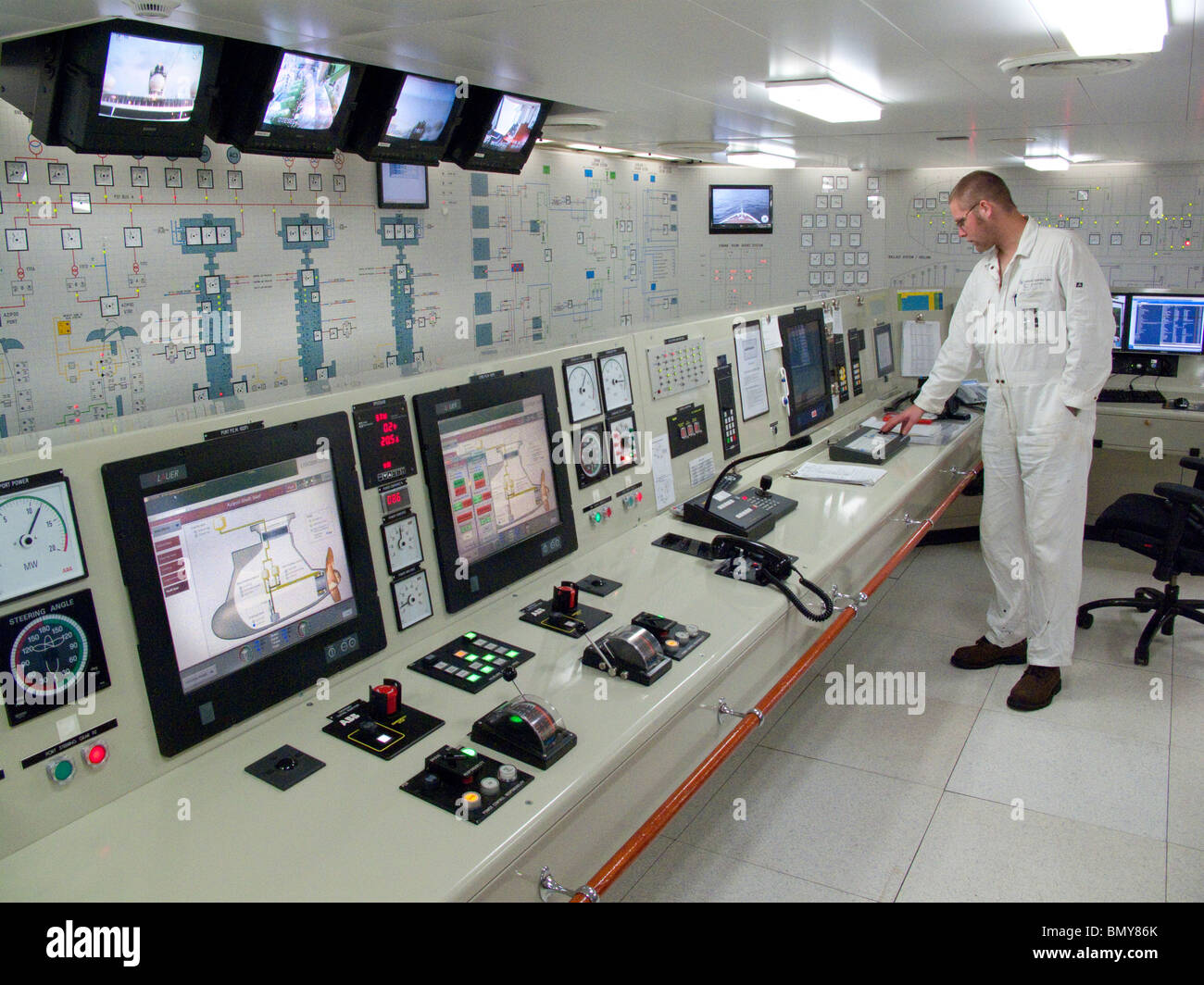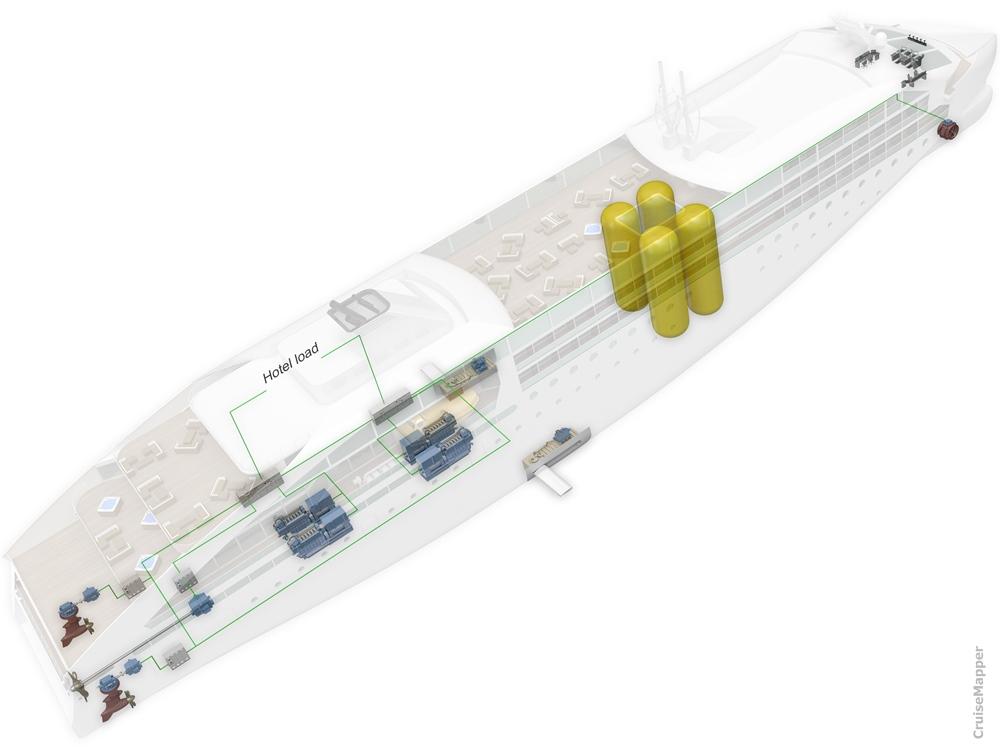Table Of Content

For example, liquified Natural Gas (LNG) is an alternative method for powering ships that burns natural gas for power. It is here that pistons hammer and crankshafts turn to propel the ship forward. It is the loud and oily place where the Chief Engineer and his team work around the clock to ensure that everything is running smoothly. It is the engine room of the ship that allows for the luxuries of air-conditioning, electricity, and plumbing on board cruise ships.
Viking Sky engine blackout was due to low oil pressure - Lloyd's List
Viking Sky engine blackout was due to low oil pressure.
Posted: Sun, 08 Oct 2023 11:33:03 GMT [source]
How Do Cruise Ships Work?
Since that time, an additional 20 LNG ships have been created, with more to come. These will be distributed over the length of the vessel along with ballast tanks. Generally, the only fuel tanks found in the engine room would be the settling and service tanks.
What Happens to the Heat From a Cruise Ship’s Engine?

The largest passenger steamship (before hitting an iceberg on April 14, 1912) was the Titanic, powered by both reciprocating engines and turbines, able to generate 50,000 horsepower (37 megawatts). Probably you've heard about Carnival cruise ship accidents related to power failures in 2013. Other companies have decided to invest in LNG-powered cruise ships, with others placing orders for their new vessels. Ships that are powered by LNG use LNG fuel to generate energy required for propulsion. The first cruise ship to use LNG fuel was Carnival’s AIDAnova, which launched in 2018.
Everything from engines to digital solutions and electric propulsion
For example, you may find computer classes or a language-learning class. Besides, these ships still offer resort-style pools, game nights, bingo, spas, gyms, and maybe even a jazz night. Now that we have reviewed how cruise ships work mechanically, let’s dive into the ship’s logistics. So the power, fuel, engine, and buoyancy are the fundamentals of the ship. What about the details of the cruise ship such as the water in your shower?
Power and Engines
From providing propulsion to generating electricity and supporting various amenities, cruise ship engines are vital to the overall functioning and comfort of these floating wonders of the sea. In case the back-up generators fail, cruise ships are also equipped with a back-up battery that allows some of these functions to continue running for short periods of time. This type of propulsion is very similar to traditional diesel engines. The main difference is that instead of the engine and pistons being connected directly to the crankshaft and propellers, it is connected to a generator to generate electricity.

They recover heat from gas turbines' exhaust, which then is used to produce the electricity needed for onboard services (air conditioning, water heating). The main advantage of the diesel-electric cruise ship engine systems is efficiency as they allow main engines to operate near the most efficient speed, no matter if the ship is moving at 5 or 25 knots. Today’s cruise ships operate on diesel or diesel-electric engines. Their operating principle does not differ much from the old days of coal steamers, except for the medium used to generate power.
The AZIPOD is the first diesel-electric podded propulsion that is capable of azimuthing through 360 degrees. The use of high voltage for DE propulsion is with the view of reducing current and conductor size. This also has the effect of considerably reducing copper, eddy and hysteresis losses. Two PEMs ensure redundancy as the failure of one does not render the ship to operate.
This process, called bunkering, is a whole-team effort and is completed before the ship is ready to travel again. There are abundant space and a deluxe ship that will greet you as a valued guest from beginning to end for the high price. No doubt, one will fall for such an exquisite experience that starts from fine dining of caviar and foie gras to personal service available at one’s fingertips. Depending on your opinion and type of cruise you may have signed up for, you may think that your cruise is way under or over-budget. The cruise companies measure these decisions and prices to minimize cost and maximize returns (of course). Distillation and desalination process uses a purification system to take all contents out of the water.
ABB's Octopus marine technology allows real-time monitoring of the vessel's energy (and fuel) consumption. Based on the collected data, the software suggests optimal performance recommendations. Main engines and generators require electricity and it's needed to keep them going. Pumps that are driven electrically take in cold ocean water to cool the engines and electrical pumps get fuel from fuel tanks and supply it to the engine. Electrical power is vital for many operational functions - without it, ships come to a halt.
Amenities range from gyms, spas, pools, and low-key entertainment. Generally targeting a niche group, most luxury cruise lines do not allow children. Premium lines are perfect for adults or those that are retiring. The brilliant catch is that many have policies of “no kids allowed,” making it an excellent selling point for adults who need some peace and quiet. These cruises make money upfront by offering more access to ports and offering the serene luxury.
The engines work the same as a traditional diesel engine, but rather than connecting to the propeller shaft – diesel-electric engines connect directly to large generators. These massive engines can propel cruise ships at an average speed of knots. Most of the heavy machinery on a cruise ship is located on the lower decks, just above the keel. The positioning of the engine room, other machines, and technical equipment give the massive vessels a lower center of gravity. Cruise Hive was established back in 2008 and among the earliest blogs in the industry. Since the start, it's been our aim to provide the latest cruise news covering all the major cruise lines.
Video: The World's Most Powerful Ship Engine - Marine Insight
Video: The World's Most Powerful Ship Engine.
Posted: Thu, 05 Oct 2023 07:00:00 GMT [source]
LNG-powered engines utilize natural gas in its liquefied state as the primary fuel source, resulting in reduced emissions and improved fuel efficiency. One significant development in engine technology to reduce environmental impact is the increased adoption of liquefied natural gas (LNG) as a fuel source for cruise ship engines. LNG-powered engines significantly reduce sulfur oxide emissions and can offer substantial reductions in nitrogen oxide and particulate matter emissions. Additionally, LNG is a cleaner-burning fuel compared to traditional marine fuels. In recent years, there has been a growing focus on improving the environmental performance of diesel engines used in cruise ships.
During night-time, luggage and bags are ready ashore for passengers to check out. Meanwhile, all the trash is dumped, and the trash containments are cleaned, crew members switch, fuels are refilled, and food is refreshed with new inventory. The perks for a premium in comparison to the mainstream is the higher quality of cuisine. Usually offering specialty restaurants and quality chefs, the price may be higher, but the overall quality is higher. The rooms at premium cruise lines are also superior, often offering suites and rooms with balconies.
Space is needed not just for engines, but for fuel tanks, generators, engine workshops, and the control room. Energy efficiencies are the key to reduce fuel consumption, CO2, and other emissions, and contribute to climate protection. Mein Schiff 3, for example, is expected to feature special energy management systems that help to consume 30% less energy than comparable size ships. In 2012, TUI reduced the waste amount to 10,7 L (per passenger day), which is 27,8% less (over 2011).

No comments:
Post a Comment